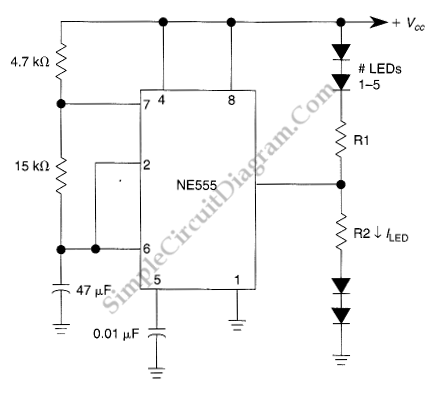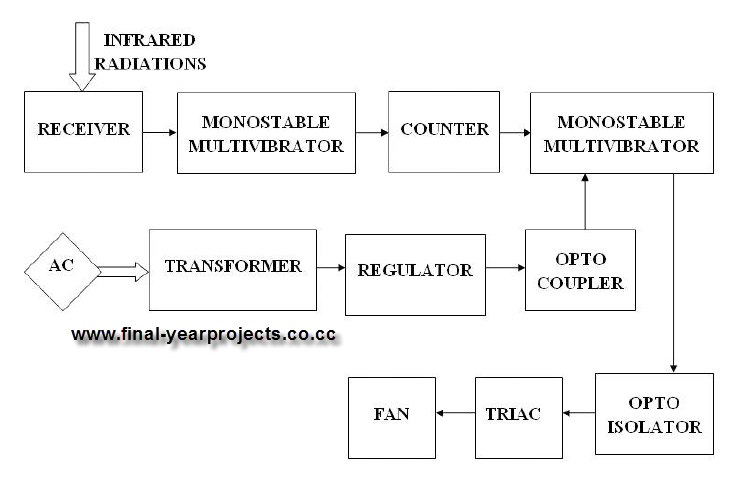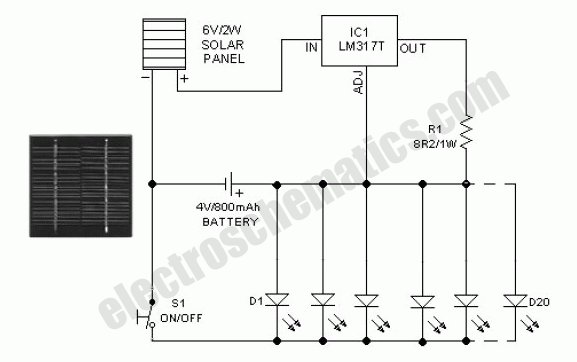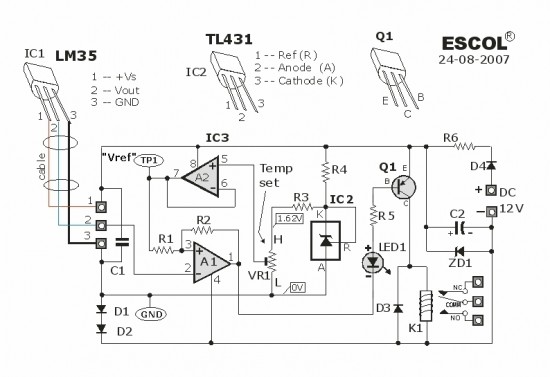
7 segment led counter
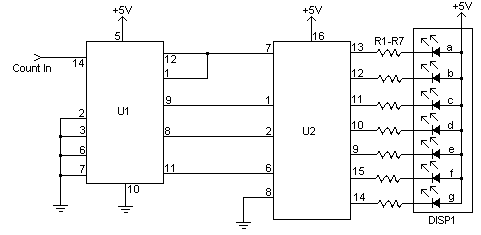
This simple counter can be used to count pulses, serving as the basis for a customer counter, similar to those found at the entrances of some stores, or for any other application requiring counting.
The described simple counter circuit is a versatile device designed to tally pulses generated by various sources. It can effectively function as a customer counter, which is commonly utilized in retail environments to monitor foot traffic. The circuit can also be adapted for other applications where counting is necessary, such as in automated systems, event logging, or inventory management.
The core of the counter typically involves a digital counter IC, such as the 74HC4040 or a microcontroller, which can be programmed to increment its count with each pulse received at its input. The pulse input can be derived from a variety of sensors, including infrared sensors, mechanical switches, or phototransistors, depending on the specific application requirements.
The circuit design includes essential components such as resistors, capacitors, and possibly a display module (like a seven-segment display) to visually present the counted value. A power supply circuit is also necessary to ensure stable operation, which may involve a voltage regulator if the supply voltage needs to be adjusted.
For enhanced functionality, features such as reset buttons, debounce circuits for mechanical switches, and memory functions to retain counts during power loss can be integrated. The output of the counter can be configured to trigger alarms or notifications when certain thresholds are reached, further expanding its usability.
Overall, this simple counter circuit is a fundamental building block in electronic counting applications, providing a reliable and efficient means to track events or items in real-time.This simple counter can be used to count pulses, as the basis for a customer counter (like you see at the doors of some stores), or for anything else that may be counted.. 🔗 External reference
The described simple counter circuit is a versatile device designed to tally pulses generated by various sources. It can effectively function as a customer counter, which is commonly utilized in retail environments to monitor foot traffic. The circuit can also be adapted for other applications where counting is necessary, such as in automated systems, event logging, or inventory management.
The core of the counter typically involves a digital counter IC, such as the 74HC4040 or a microcontroller, which can be programmed to increment its count with each pulse received at its input. The pulse input can be derived from a variety of sensors, including infrared sensors, mechanical switches, or phototransistors, depending on the specific application requirements.
The circuit design includes essential components such as resistors, capacitors, and possibly a display module (like a seven-segment display) to visually present the counted value. A power supply circuit is also necessary to ensure stable operation, which may involve a voltage regulator if the supply voltage needs to be adjusted.
For enhanced functionality, features such as reset buttons, debounce circuits for mechanical switches, and memory functions to retain counts during power loss can be integrated. The output of the counter can be configured to trigger alarms or notifications when certain thresholds are reached, further expanding its usability.
Overall, this simple counter circuit is a fundamental building block in electronic counting applications, providing a reliable and efficient means to track events or items in real-time.This simple counter can be used to count pulses, as the basis for a customer counter (like you see at the doors of some stores), or for anything else that may be counted.. 🔗 External reference

